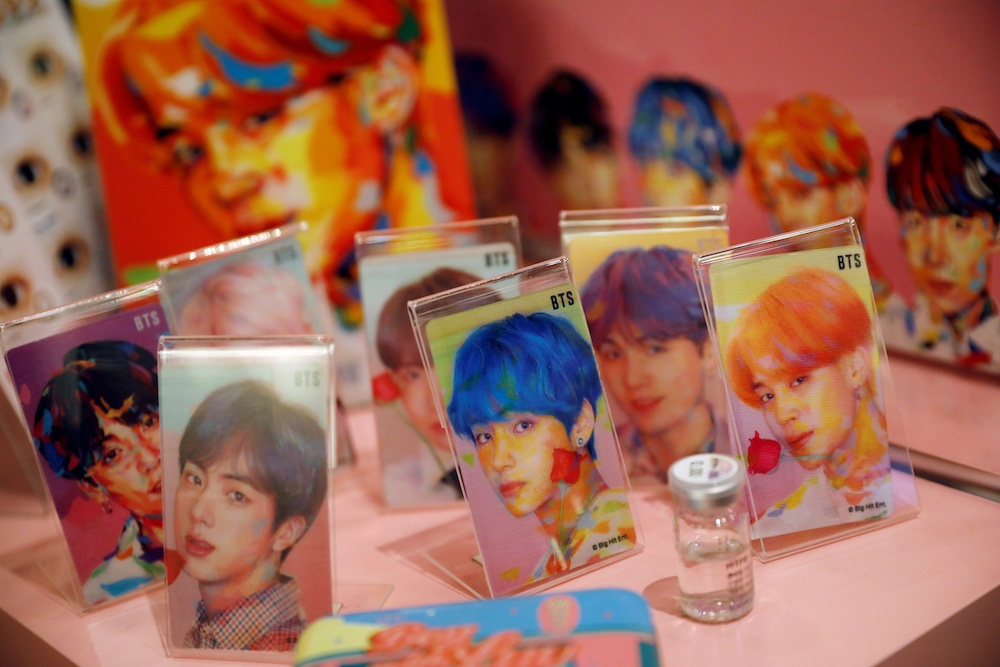KUALA LUMPUR, Jan 13 — In the age of Spotify, YouTube and Apple Music, it seemed like compact discs (CDs) would become relics of a bygone era.
Despite this, Billboard reported that there is still a steady growth of CD album sales in the United States with K-pop acts leading the charge alongside pop singer Taylor Swift.
K-pop artists like Stray Kids, TXT, NewJeans, Twice, Seventeen and Jungkook were at the top 10 album sales of 2023.
According to the International Federation of the Phonographic Industry (IFPI), countries like South Korea, Japan and China are the countries with the largest music market in 2022.
K-pop, J-pop and C-pop have been at the forefront of keeping the sales of CDs afloat globally and in an age when the hottest Kpop hits are a swipe away, how have they kept physical music alive?
Merchandise and collectibles
Merchandising and comeback albums always come hand in hand in K-pop artist releases.
With every comeback, the new set of photocards, posters and photobook outnumber the average contents of album releases from Western artists.
Take girl group Itzy’s latest album Born to Be which contains a manual, QR card, photocard set, poster and a special card.
That is one out of two versions of the album which contain a totally different set of said merchandise.
It is common for K-pop groups to release multiple versions of one album, some of them even exclusive, to increase collectability among fans.
The prices of these merch-packed albums can range from RM50 up to RM2,000 depending on its exclusivity and rarity, with personally signed items fetching the highest prices.
On top music releases, lightsticks are one of the most important collectibles for die-hard fans, which are often bought together with their albums.
A lightstick is a handheld device that fans use during concerts and performances to show their support to their favourite artists.
Each lightstick is uniquely designed to represent the characteristics of the group and is a ‘must own’ item to be considered a real fan.

Fandom culture
It’s no secret that the passion of K-pop fans around the world is intense, and getting a physical copy of one's favourite artist is a rite of passage for a true fan.
During comeback season, it is common to see K-pop fans in Korea in long lines to be the first to get their favourite artist’s latest album.
Hardcore fans are known to pay a pretty penny to collect all versions of their idol's music, with some spending most of their savings to do so.
According to the Korean music chart system Hanteo, Korea’s CD sales have been on a steady rise since 2016.
"K-pop fandoms have a strong notion that you are a ‘true fan’ only if you buy the physical CD,” Hanteo Global public relations head Sim Se-na told Korea JoongAng Daily.
"When an artist releases an album, EP or single, fans think it’s their duty to help its success by purchasing physical copies to make it reach No.1 on music charts. That’s part of the fan activity.”
The big K-pop labels like JYP, SM, YG and HYBE have also made an effort to have their artists do music releases solely for the Japanese and Chinese market.
Some of the biggest groups like EXO and NCT have made albums for Japan or China and have created sub-units with Japanese and Chinese members.
This is an effort to tap into the large music markets of Japan and China.
In Japan, K-pop is seeing success as CDs are as dominant in sales as their digital counterparts due to the same fan culture that also exists in Korea.
Tower Records Japan General Manager of the Retail Business Division Masato Hasegawa told Asian News Network that Japanese consumers value CDs for reasons other than music.
However, in China, efforts have not been successful as sales of K-pop albums have been on a steep decline in late 2023 according to Korea JoongAng Daily.
The drop in K-pop consumption may be due to the slowing local economy, patriotic consumption of C-pop groups and an increase in piracy.
Streaming’s lack of profitability
K-pop labels have been turning to merchandise and concert tours for more profit as streaming fails to bring in major profits.
In March 2023, the Ministry of Culture, Sports and Tourism set a rate to how much artists can earn per stream at RM0.025 (7 Korean won) per stream and RM2.47 per download, Kooreaboo reported.
Out of the RM0.025 earned, 10 per cent goes to the copyright holders for royalties and 35 per cent goes to the streaming platform, leaving the artist with only six per cent of profits.
Though it may not seem like much at first, multiply them by the millions of streams K-pop groups get and the earning can skyrocket to over RM200,000.
However after earnings are split, streaming numbers alone can’t financially sustain most K-pop artists which is why they turn to merchandise, fan-calls and endorsements to earn more income.
Idols who also take on writing and producing roles on songs can earn up to 10 per cent of the revenue of their songs.






















